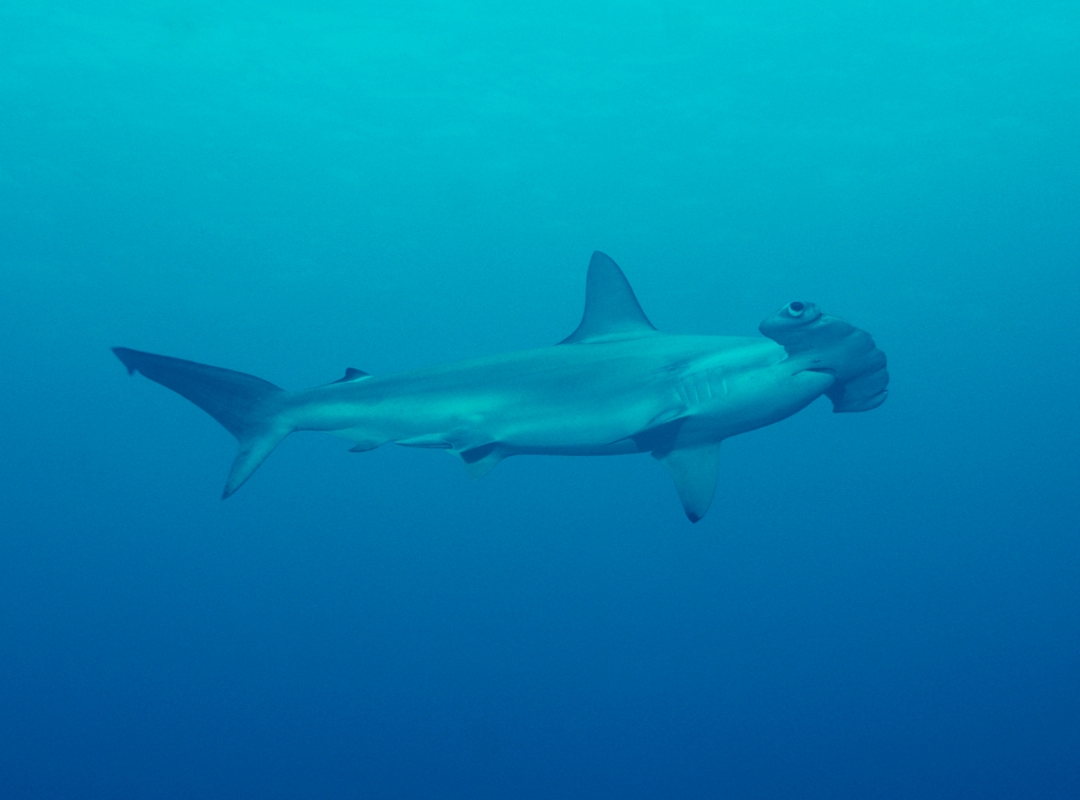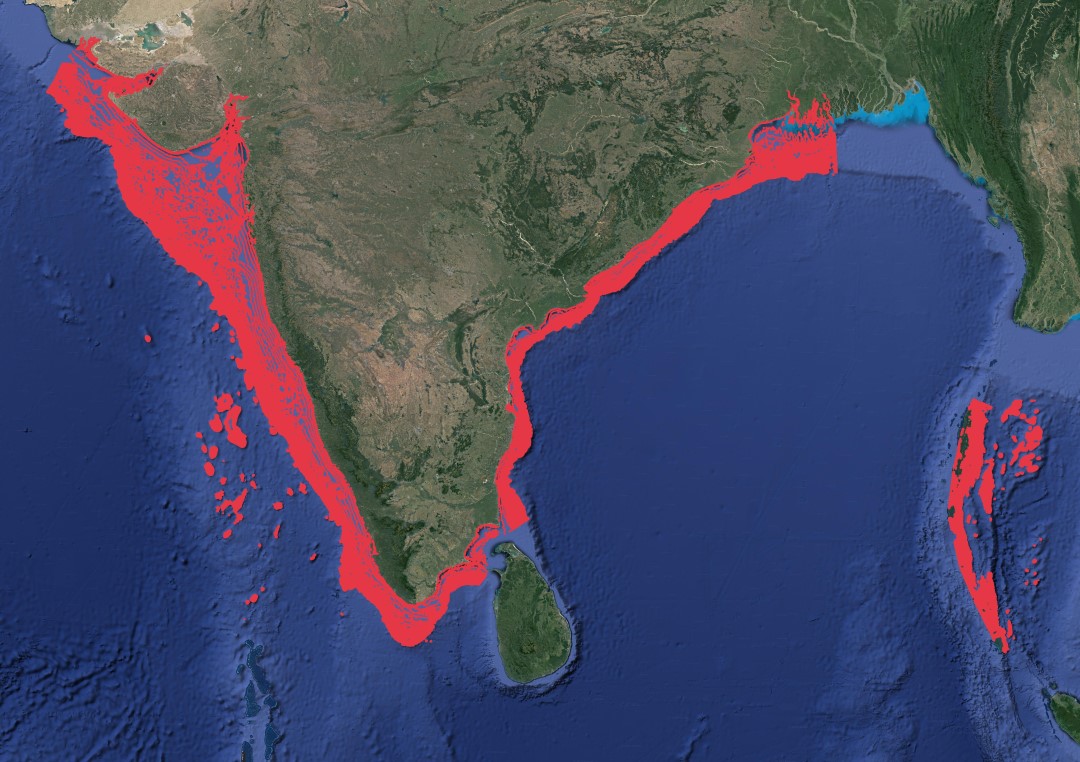Species Name
Scalloped Hammerhead
Scientific Name
Sphyrna lewini
Family Name
Sphyrnidae
IUCN Status
Critically Endangered
Head broadly arched and hammer-shaped and marked by a prominent indentation at midline, it is distinguished from other hammerheads by an indentation located in the center of its laterally expanded head.
Biology
Length: Adult Scalloped Hammerhead sharks typically reach a length of 12 to 14 feet (3.7 to 4.3 meters).
Gestation period: 9 to 10 months
Littter size: Scalloped Hammerhead sharks are viviparous, meaning they give birth to live young. The litter size can vary, but it's usually between 12 to 40 pups.
Life Expectancy: Scalloped Hammerhead sharks have an average lifespan of around 20 to 30 years, maximum reported age is 35 years.
Diet: Their diet primarily consists of various species of fish, rays, and smaller sharks. They are known to be skilled hunters and use their unique hammer-shaped heads to improve their prey detection and capture.
Habitat and Distribution
Habitat: Sphyrna lewini typically inhabits warm-temperate and tropical coastal waters. These sharks are commonly found in the vicinity of continental shelves, coral reefs, and islands. They are known to frequent shallow coastal areas, estuaries, bays, and lagoons, but they can also venture into deeper offshore waters.
Distribution: They have a vast geographic range, including populations in the eastern and western Atlantic, eastern Pacific, and Indian Ocean, among other oceans. The Americas, Africa, Australia, and Asia are just a few of the places around the world where they have been documented.
Known landing centres: Mumbai (Versova, Sassoon Docks, Satpati, Naigaon, New Ferry Wharf), Cochin Fisheries Harbour Veraval, Mangrol, Porbander, Okha, Keelakarai, Royapuram Fishing Harbour, Cuddalore Fishing Harbour, Nagapattinam Fishing Harbour Thoothukudi, Threshpuram, Tharuvaikulam, Vembar, Keelakarai, Vellapatt, Junglighat, Burmanallah, Wandoor, and Dignabad
Depth: Juvenile scalloped hammerheads are often found in shallower coastal areas, bays, and estuaries where they seek refuge and prey on smaller fish and invertebrates. As they grow and mature, they venture into deeper waters, sometimes reaching depths of up to 500 meters (approximately 1,640 feet).
Commercial Value
The main product from the species are the fins. Their fins are among the most common to be traded in the fin trade and one of the preferred species for shark fin soup.
Threats
They are a highly migratory species and due to their migratory schooling behaviour , large groups can be harvested in short time. Making them even more at risk from fishing pressures.
References
- Clarke TA. 1971. The ecology of the scalloped hammerhead shark, Sphyrna lewini, in Hawaii. Pac Sci 25(2): 133-144.
- Seraphin, Kanesa & Holland, Kim. (2006). Habitat use, growth rates and dispersal patterns of juvenile scalloped hammerhead sharks Sphyrna lewini in a nursery habitat. Marine Ecology-progress Series - MAR ECOL-PROGR SER. 312. 211-221. 10.3354/meps312211.



